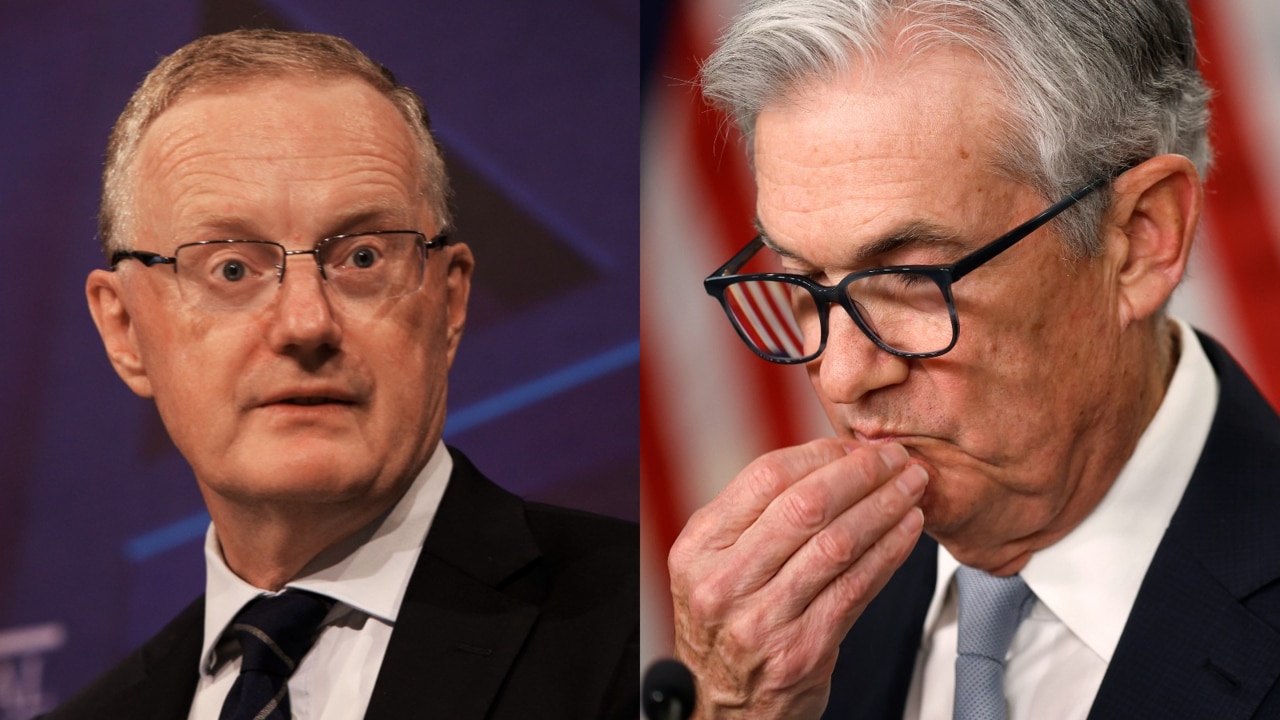Economists raise their RBA interest rate expectations as wages soar
The likelihood of further interest rate hikes is growing, with TD Securities the latest to predict a 4.85 per cent cash rate in Australia by September.

Economists continue to dial up their interest rate expectations, with TD Securities the latest to predict a 4.85 per cent cash rate in Australia by September.
The investment bank’s forecast implies three more rate hikes of 25 basis points.
Interest rate futures imply a cash rate peak of almost 4.6 per cent in November, but Goldman Sachs and Capital Economics, along with TD Securities, are among those predicting a rise to 4.85 per cent.
TD Securities added 25 bps to its previous “terminal” rate forecast after strong jobs data last week. The figures show the RBA’s aggressive rate hikes so far have done little to cool the labour market, according to TD Securities senior Asia-Pacific rates strategist Prashant Newnaha.
“The red hot Australian labour market poses the threat that inflation expectations become unanchored given weak productivity and upside risks to the RBA’s wages forecasts,” he said. While the RBA had forecast annual wage growth of no more than 4 per cent for the next two years, Mr Newnaha said the RBA appeared concerned that the Fair Work Commission’s decision on minimum and award wages this month could be a beacon for other workers seeking wage rises.
Also, while the RBA’s wages forecasts in May had assumed productivity growth of 1 per cent, national accounts data in June showed productivity actually fell 4.5 per cent, year on year.
It came as British CPI data for May showed core inflation accelerated to 7.1 per cent on-year against expectations that it would remain at 6.8 per cent after aggressive rate hikes by the Bank of England. The BoE was set to meet Thursday amid expectations of another 25bps increase in the bank rate to 4.75 per cent and market pricing that the British policy rate will peak at 6 per cent in February.

Mr Newnaha said the strong jobs figures should lead the RBA to hike again in July, and with CPI data next month expected to show elevated core and services inflation, it should go again in August. But an increase in the RBA’s population growth assumptions this year, combined with the tighter labour market, is likely to have increased the RBA’s “neutral” cash rate estimate, meaning that it may also need to go higher than previously thought in order to achieve a “restrictive” cash rate.
A Freedom of Information release last month showed the RBA lifted its nominal neutral cash rate forecast 30bps to 3.8 per cent in March, when it considered a peak 100bps higher at 4.8 per cent.
“The bank considered hiking 25bps at each meeting to be consistent with the bank achieving its inflation target by end 2024,” Mr Newnaha said. “As aggressive as the forecast paths in the scenario analysis were, there have been a few significant shifts in assumptions since then that suggest the bank would likely consider a cash rate above 5 per cent in a refreshed scenario analysis.”
The increase in the RBA’s population growth assumptions, from 1.5 per cent on-year in the February statement on monetary policy to 2 per cent on-year in RBA governor Philip Lowe’s April 5 speech, implies a higher nominal neutral cash rate than previously assumed by the RBA. “The knock-on impacts from this surge in overseas net migration are becoming evident,” Mr Newnaha said. “It has helped stoke the demand for housing and with no discernible shift in the supply of housing. This means advertised rents have surged and house prices are now recovering.”
New housing is unlikely to improve in the near term as higher variable rates hit building approvals. A second big shift in the RBA’s assumptions concerns the established housing market, which has held up much better than expected, leading the RBA to note that “house prices had increased in recent months and households’ expectations for future rises in house prices had strengthened”.

“Members also noted that the stabilisation in housing loan approvals suggested that financial conditions may not have been as tight as they had previously judged,” RBA June minutes said.
“Although the board does not target asset prices, members agreed that movements in asset prices provide relevant information and need to be considered when assessing the outlook for activity and inflation,” RBA minutes said in May.
Mr Newnaha said the RBA was clearly giving itself the scope to raise the cash rate more should housing activity pick up and established house prices head higher. But the “real wildcard” for central bankers remains the stock of excess savings.
Households saved an additional $300bn over the pandemic relative to pre-pandemic trends through to the end of 2022, equivalent to around 20 per cent of annual disposable income, according to the RBA.
Because these additional savings and robust labour markets appear to have played a key role in sustaining consumption on goods and services, despite negative annual wage growth, they are also likely to have boosted the RBA’s estimate of the neutral cash rate.
“The key is how quickly these accumulated savings are run down,” Mr Newnaha said.
“If they are run down slowly this will put pressure on the RBA to raise the cash rate even more.”
But half-year updates from Australian banks last month showed mortgage offset accounts were unchanged while total deposits in the system increased.
“Sure, there are questions around how well distributed these savings are, but the increase in deposits provides scope down the track for the RBA to take the cash rate above 5 per cent if deemed necessary,” Mr Newnaha said. That depended on how quickly excess savings were run down.








To join the conversation, please log in. Don't have an account? Register
Join the conversation, you are commenting as Logout